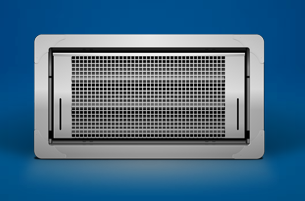Flood Vents in Post Frame Buildings
Where post frame buildings are constructed in a flood plane, two choices exist to deal with flood conditions. Personally I would opt for bringing in fill to raise building above flood level. For those willing to deal with consequences of flood waters going through their building, an option is to provide flood vents.
National Flood Insurance Program (NFIP), requires at least two flood venting openings for finished or enclosed space (e.g. basements or garages) or for crawl spaces. Vent opening required is a net area of at least one inch per square foot of enclosed space. Flood ventilation openings must be on different sides of the enclosed space.
Each individual enclosed area requires openings on its exterior walls so flood water can enter or exit directly to and from the enclosed space. Bottom of flood vent openings cannot be higher than one foot above grade where vents are installed. Windows, doors, and garage doors are not considered openings for flood venting purposes.
ASCE 24 provides two methods for flood venting, non-engineered openings and engineered openings. The first method is as follows:
Section 2.6.1.1 “Non-Engineered Openings in Enclosures Below the Design Flood Elevation”
Non-engineered openings shall meet the following criteria:
1. There shall be a minimum of two openings on different sides of each enclosed area; if a building has more than one enclosed area below the design flood elevation, each area shall have openings on exterior walls.
2. The total net area of all openings shall be at least 1 square inch for each square foot of enclosed area.
3. The bottom of each opening shall be 1 foot or less above the adjacent ground level.
4. Openings shall be at least 3 inches in diameter.
5. Any louvers, screens or other opening covers shall allow the automatic flow of floodwaters into and out of the enclosed area.
6. Openings installed in doors and windows, that meet requirements 2.1 through 2.5, are acceptable; however, doors and windows without installed openings do not meet the requirements of this standard.
While several companies produce or have produced flood venting products Smart VENT is most-often installed for structural protection in flood-prone areas.
Smart VENT’s Flood Vent Model# 1540-510 (https://smartvent.com/products/view/1540-510) is certified to provide insulated flood protection only. This model is used for a garage or conditioned space, where flood protection is required but ventilation is NOT desired. This flood door is constructed of solid stainless steel wrapped around an insulating foam core.

Smart Vent 1540-510
Smart VENT Flood Vent General Description
Smart VENT doors are latched closed until flood water enters. Smart VENT does not rely on louvers to let flood water in and out. Regardless of louvers’ position, opened or closed, when flood water flows into door, patented internal floats unlatch, releasing door to rotate open to relieve hydrostatic pressure. Louvers and pest screen are rotated out of flood water path. This allows flood water to automatically enter and exit through frame opening, relieving pressure from your post frame building walls.
We recommend our flood zone clients flood-proof their post frame buildings with Smart Vent family of products, they will dramatically reduce the chance of structural damage during a flood with its automatic, bi-directional vent relieving hydrostatic pressure on walls during rising or falling floodwaters.






